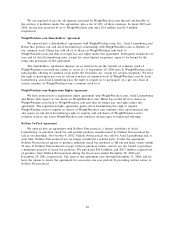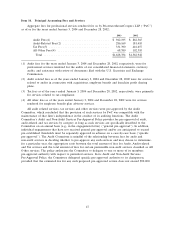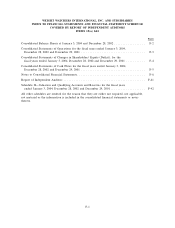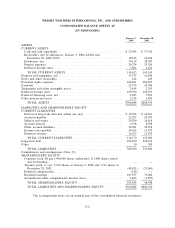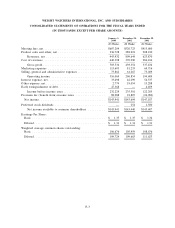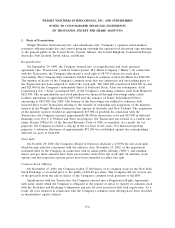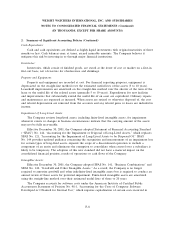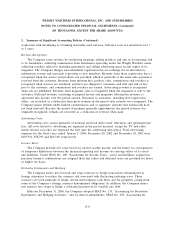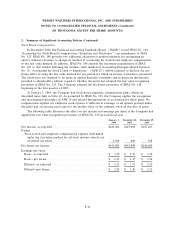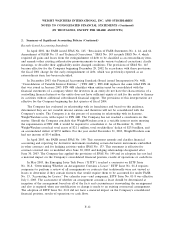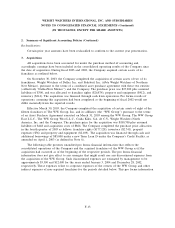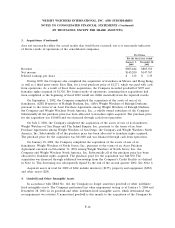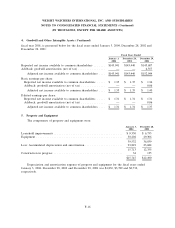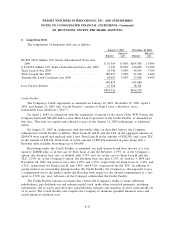WeightWatchers 2003 Annual Report Download - page 61
Download and view the complete annual report
Please find page 61 of the 2003 WeightWatchers annual report below. You can navigate through the pages in the report by either clicking on the pages listed below, or by using the keyword search tool below to find specific information within the annual report.WEIGHT WATCHERS INTERNATIONAL, INC. AND SUBSIDIARIES
NOTES TO CONSOLIDATED FINANCIAL STATEMENTS (Continued)
(IN THOUSANDS, EXCEPT PER SHARE AMOUNTS)
1. Basis of Presentation (Continued)
Secondary Stock Offering:
On September 23, 2002, the Company completed the secondary offering of 15,000 shares of
common stock at an initial price of $42.00 per share. The Company did not receive any of the proceeds
from the sale of shares of the Company’s common stock pursuant to this secondary offering.
2. Summary of Significant Accounting Policies
Fiscal Year:
The Company’s fiscal year ends on the Saturday closest to December 31st and consists of either 52
or 53 week periods. Fiscal year 2003 contained 53 weeks while fiscal years 2002 and 2001 contained 52
weeks.
Consolidation:
The consolidated financial statements include the accounts of the Company and its wholly-owned
subsidiaries. All intercompany accounts and transactions have been eliminated in consolidation. The
Company has investments in two entities that it accounts for under the equity method. The Company’s
percentage of profits and losses of these two entities are also included in the consolidated financial
statements as calculated under the equity method of accounting.
Use of Estimates:
The preparation of financial statements, in conformity with accounting principles generally
accepted in the United States of America, requires management to make estimates and assumptions
that affect the reported amounts of assets and liabilities, the disclosure of contingent assets and
liabilities at the date of the financial statements, and the reported amounts of revenues and expenses
during the reporting period. On an ongoing basis, the Company evaluates its estimates and judgments,
including those related to inventories, investments, the impairment analysis for goodwill and other
indefinite-lived intangible assets, income taxes, and contingencies and litigation. The Company bases its
estimates on historical experience and on various other factors and assumptions that it believes to be
reasonable under the circumstances, the results of which form the basis for making judgments about
the carrying values of assets and liabilities that are not readily apparent from other sources. Actual
amounts could differ from these estimates.
Translation of Foreign Currencies:
For all foreign operations, the functional currency is the local currency. Assets and liabilities of
these operations are translated at the exchange rate in effect at each year-end. Income statement
accounts are translated at the average rate of exchange prevailing during the year. Translation
adjustments arising from the use of differing exchange rates from period to period are included in
accumulated other comprehensive income (loss).
Foreign currency gains and losses arising from the translation of intercompany receivables with the
Company’s international subsidiaries are recorded as a component of other expense, net, unless the
receivable is considered long-term in nature, in which case the foreign currency gains and losses are
recorded as a component of other comprehensive income (loss).
F-7



